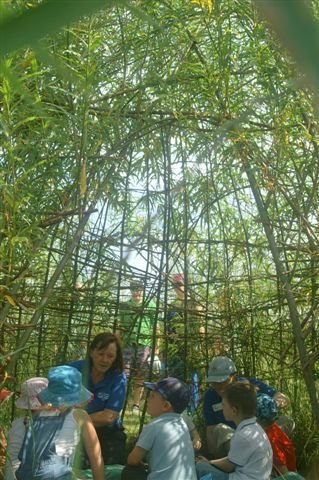We are pleased to announce our new willow maze is now open to the public!
Ward Jackson primary school came along last Friday for a a sneak preview. They all managed to find their way through the tunnels, into the willow wigwam and out again!

Children from Ward Jackson Primary with our field teachers, listening to the sounds of nature inside the willow wig-wam.
It has taken 2 ½ years of hard work by Saltholme's team…